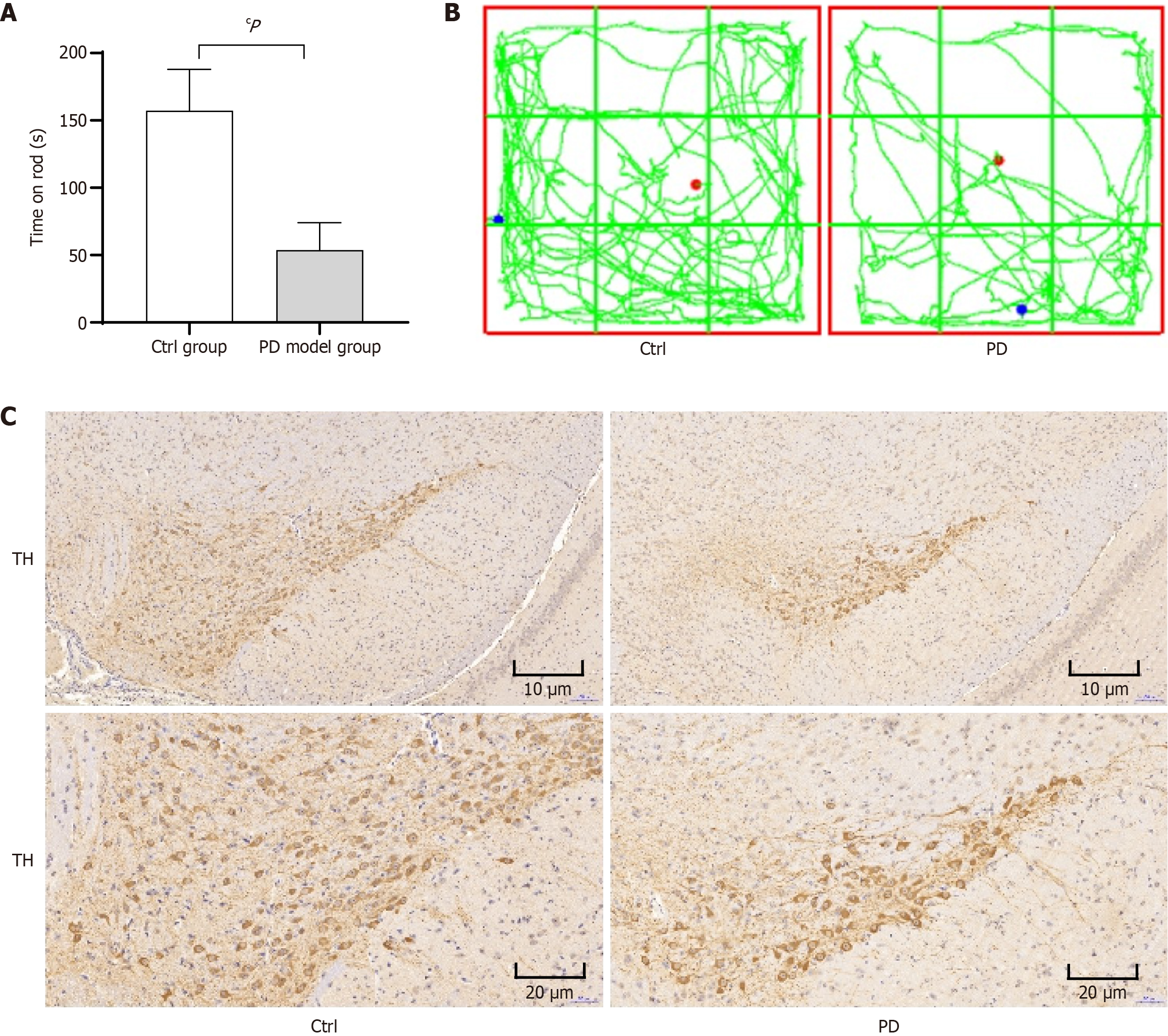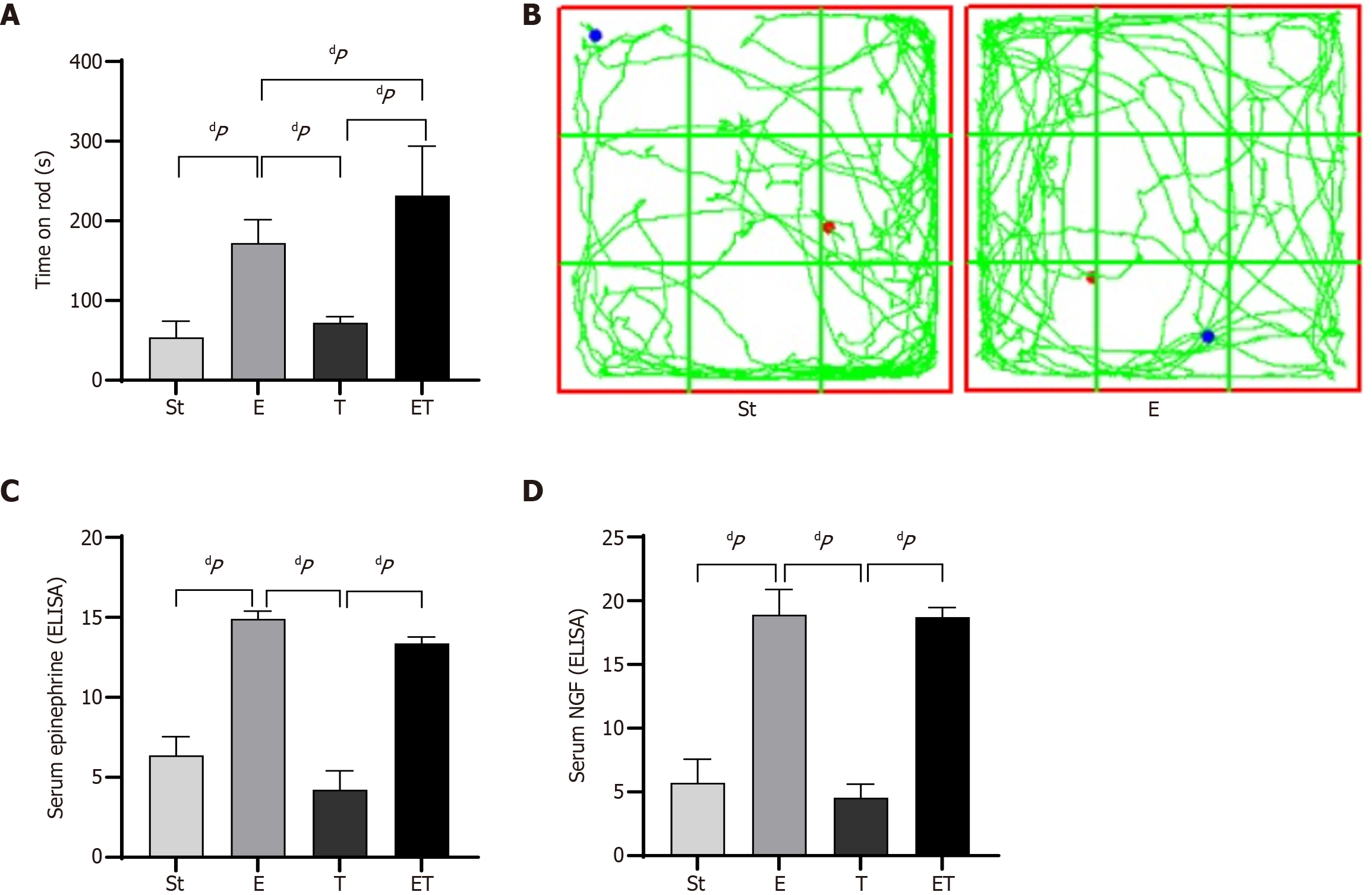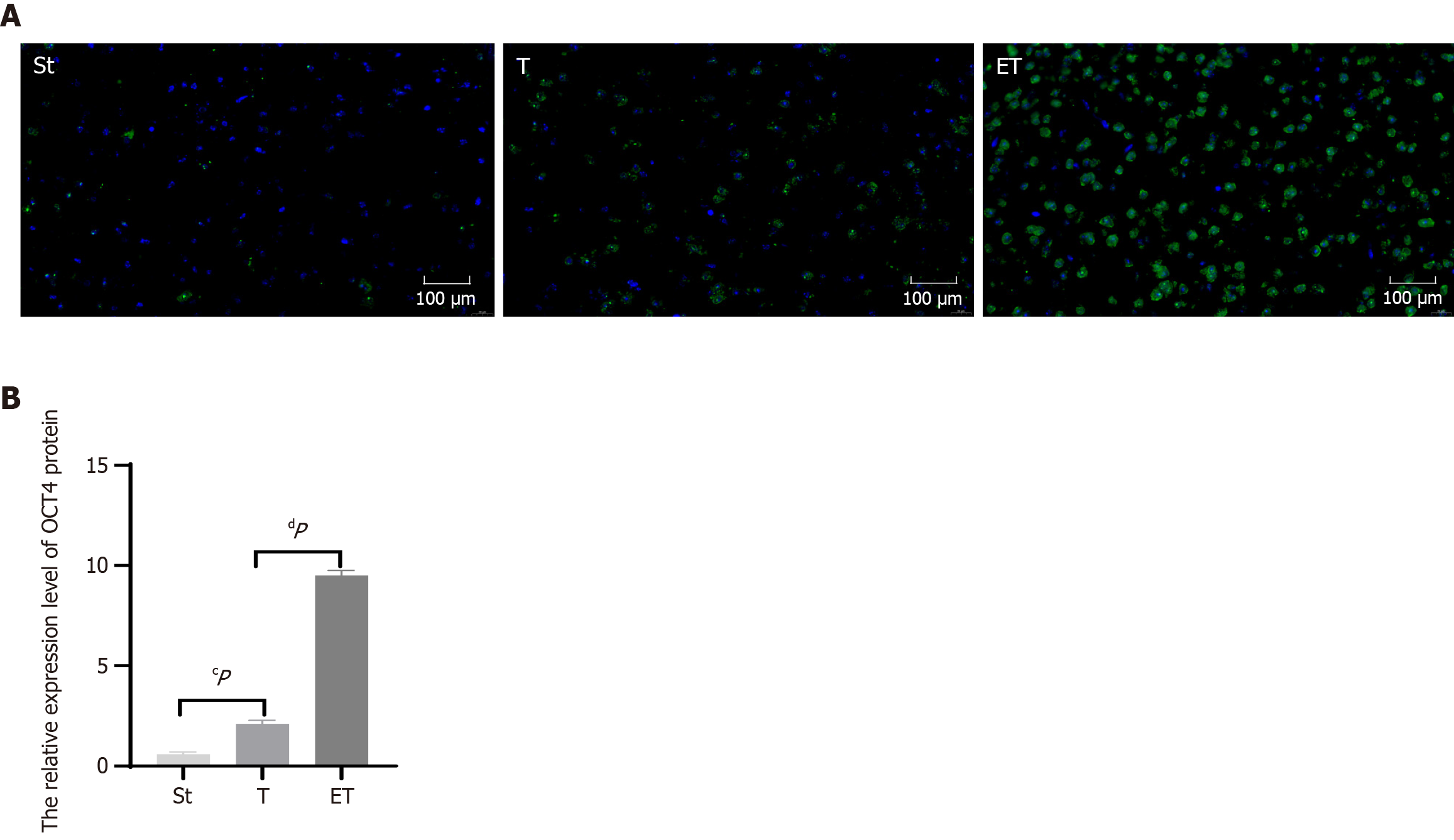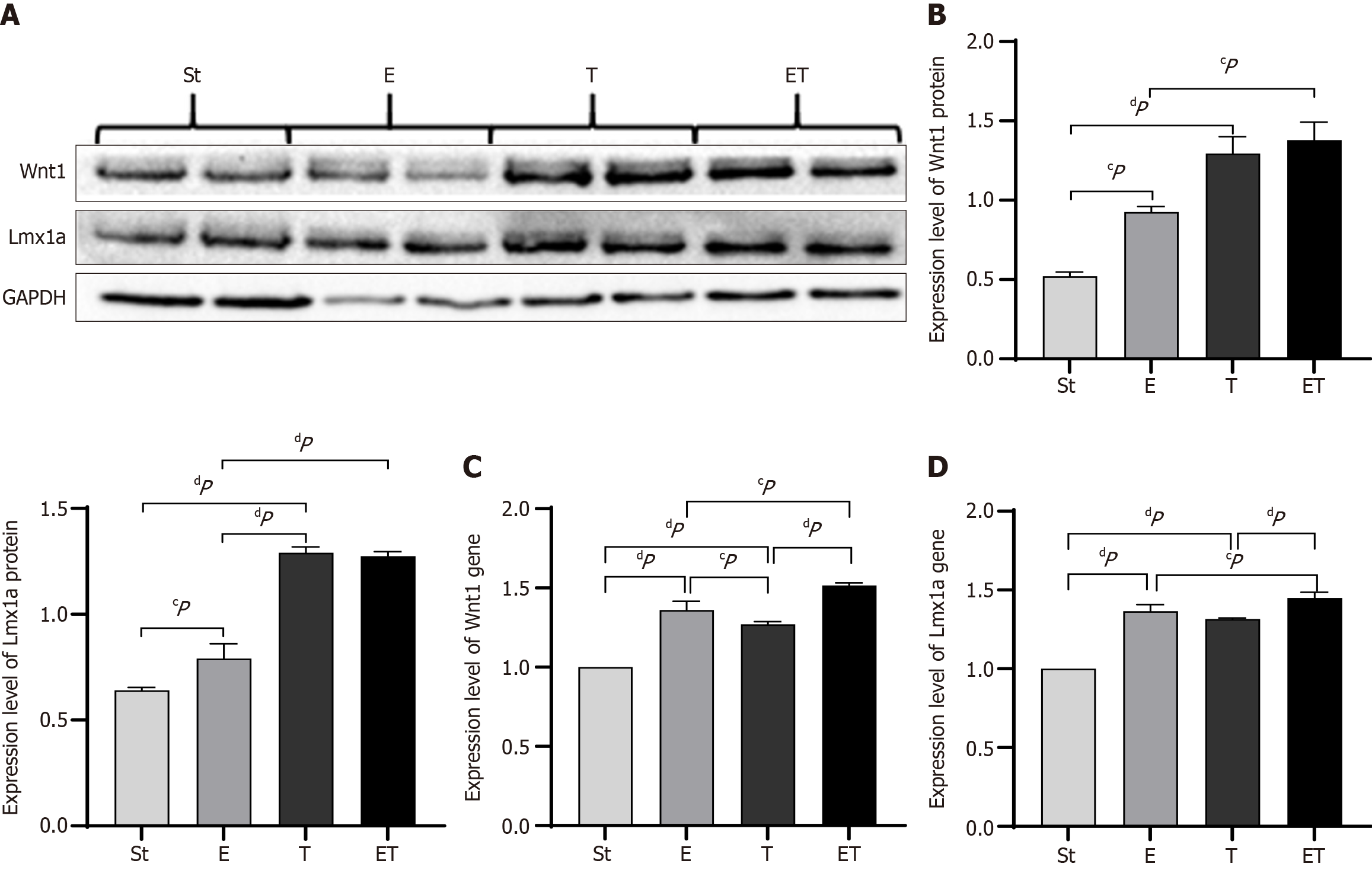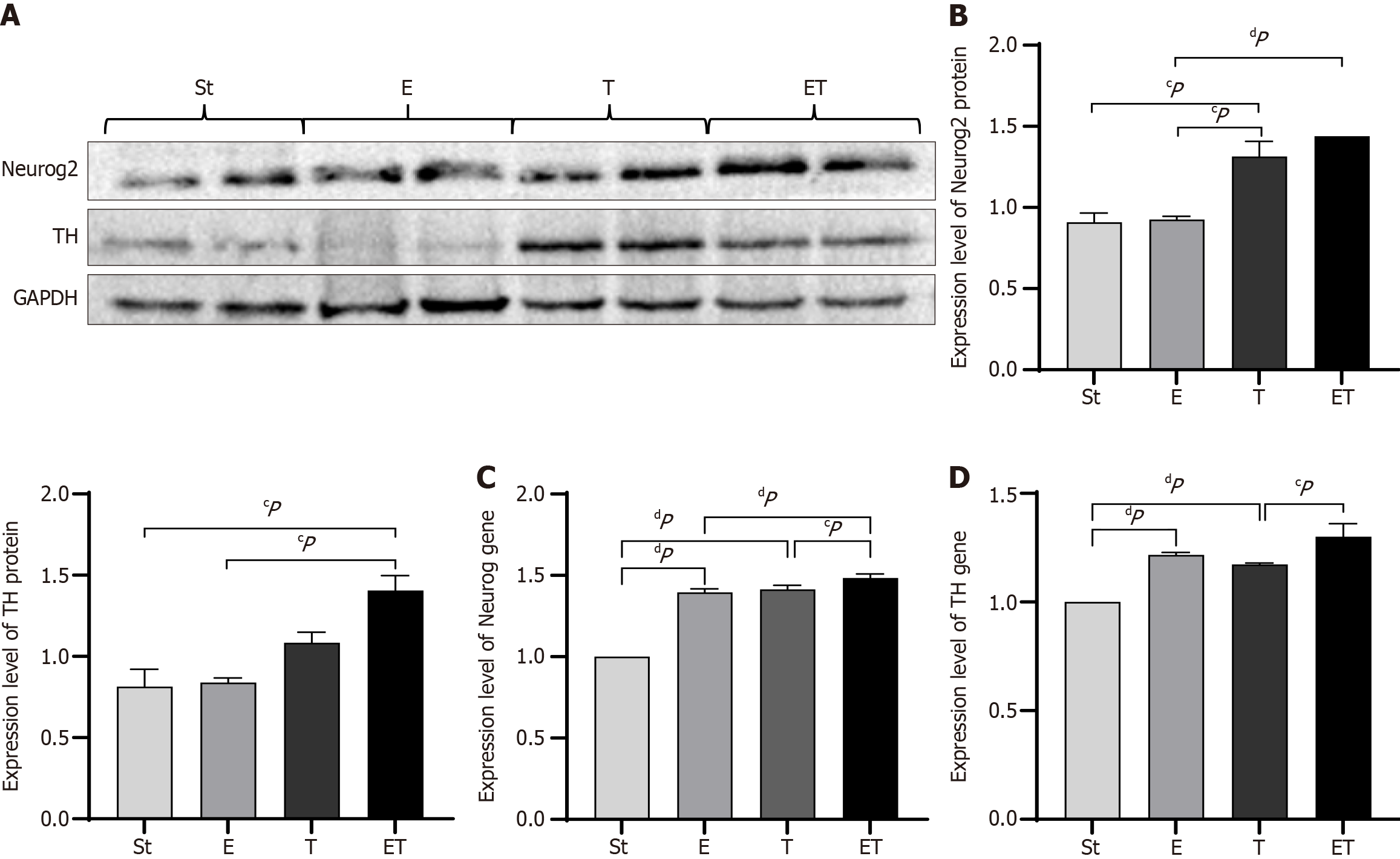Copyright
©The Author(s) 2025.
World J Stem Cells. Sep 26, 2025; 17(9): 109330
Published online Sep 26, 2025. doi: 10.4252/wjsc.v17.i9.109330
Published online Sep 26, 2025. doi: 10.4252/wjsc.v17.i9.109330
Figure 1 Validation of Parkinson’s disease mouse model by rotarod test, open field test, and tyrosine hydroxylase immunohisto
Figure 2 The results of rotarod test and open field test, as well as changes in serum epinephrine and nerve growth factor protein expression levels in mice of each group.
A: The changes in the rotarod test performance of mice in each group; B: The changes in the open field test of sedentary and exercise Parkinson’s disease group; C: The enzyme-linked immunosorbent assay analysis of epinephrine in the serum of mice in each group; D: The enzyme-linked immunosorbent assay analysis of nerve growth factor in the serum of mice in each group. dP < 0.01. St: Sedentary Parkinson’s disease group; E: Exercise Parkinson’s disease group; T: Induced pluripotent stem cell-treated Parkinson’s disease group; ET: Exercise and induced pluripotent stem cell-treated Parkinson’s disease group; NGF: Nerve growth factor.
Figure 3 Immunofluorescence localization images of brain tissues from mice in sedentary Parkinson’s disease group, induced pluripotent stem cell-treated Parkinson’s disease group, and exercise and induced pluripotent stem cell-treated Parkinson’s disease group.
A: Results of immunofluorescence staining of mouse brain tissue sections, blue: DAPI, green: OCT4; B: Relative expression of OCT4 in mouse brain tissue sections. cP < 0.05; dP < 0.01. St: Sedentary Parkinson’s disease group; T: Induced pluripotent stem cell-treated Parkinson’s disease group; ET: Exercise and induced pluripotent stem cell-treated Parkinson’s disease group.
Figure 4 Expression of Wnt1 and Lmx1a in the midbrain of mice in each group.
A: The results of western blot detection of Wnt1 and Lmx1a in the midbrain of mice in each group; B: Statistical analysis of western blot results for Wnt1 and Lmx1a in the midbrain of mice in each group; C: Conduct reverse transcription polymerase chain reaction detection and analysis of Wnt1 in the midbrains of each group of mice; D: Carry out reverse transcription polymerase chain reaction detection and analysis of Lmx1a in the midbrains of each group of mice. cP < 0.05; dP < 0.01. St: Sedentary Parkinson’s disease group; E: Exercise Parkinson’s disease group; T: Induced pluripotent stem cell-treated Parkinson’s disease group; ET: Exercise and induced pluripotent stem cell-treated Parkinson’s disease group.
Figure 5 Expression of Neurog2 and TH in the midbrain of mice in each group.
A: The results of western blot detection of Neurog2 and TH in the midbrain of mice in each group; B: Statistical analysis of western blot results for Neurog2 and TH in the midbrain of mice in each group; C: Reverse transcription polymerase chain reaction analysis results for Neurog2 in the midbrain of mice in each group; D: Reverse transcription polymerase chain reaction analysis results for TH in the midbrain of mice in each group. cP < 0.05; dP < 0.01. St: Sedentary Parkinson’s disease group; E: Exercise Parkinson’s disease group; T: Induced pluripotent stem cell-treated Parkinson’s disease group; ET: Exercise and induced pluripotent stem cell-treated Parkinson’s disease group.
- Citation: Jiang X, Lu ZM, Wang QL, Luo Y, Zhang J. Exercise combined with induced pluripotent stem cells enhances the Wnt1-Lmx1a loop in the midbrain of Parkinsonian mice to alleviate Parkinsonian symptoms. World J Stem Cells 2025; 17(9): 109330
- URL: https://www.wjgnet.com/1948-0210/full/v17/i9/109330.htm
- DOI: https://dx.doi.org/10.4252/wjsc.v17.i9.109330













